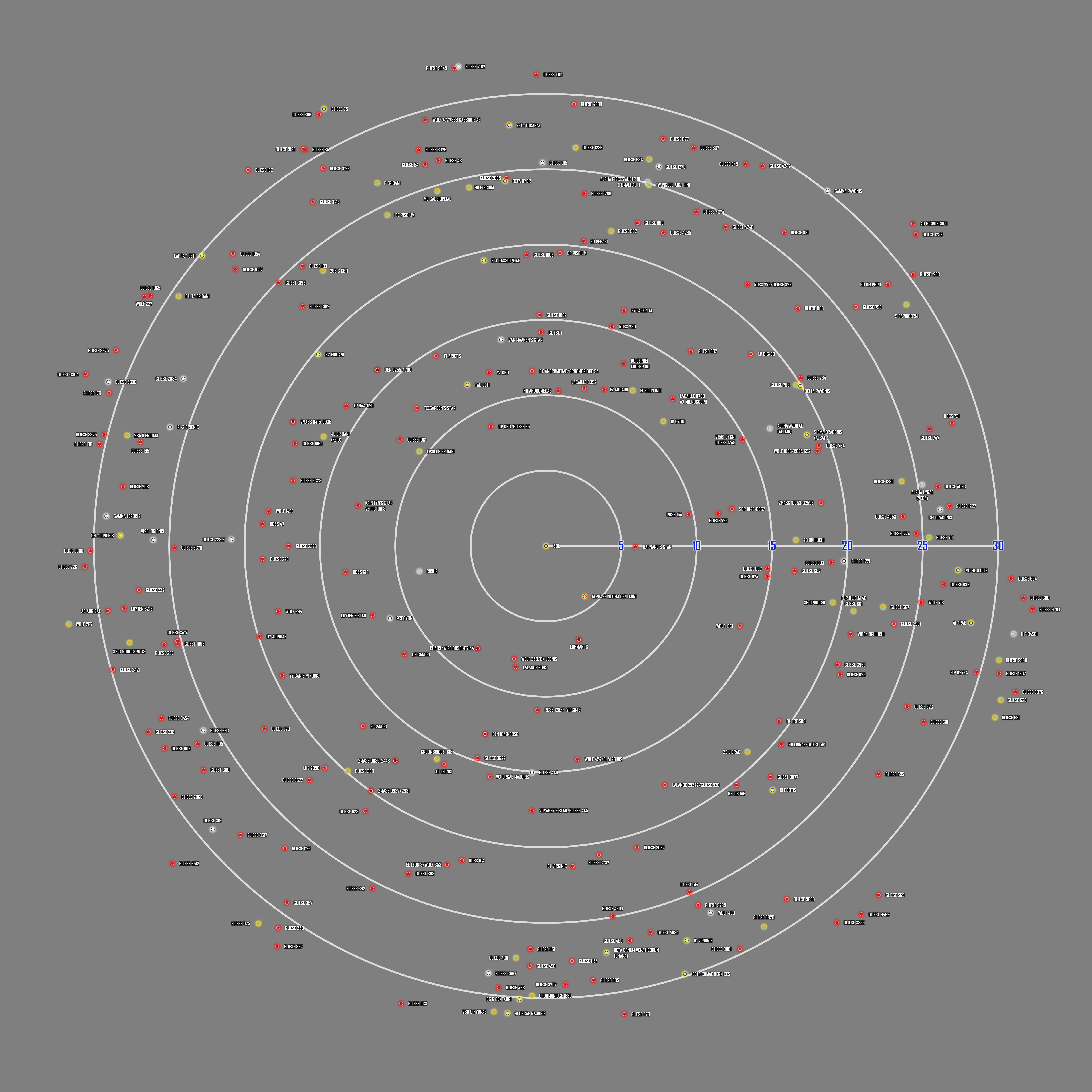HOME | DD
 WorldBuildersInc — Local Star Map
by-nc
WorldBuildersInc — Local Star Map
by-nc

#reference #space #starmap #stars
Published: 2017-12-23 22:24:00 +0000 UTC; Views: 6279; Favourites: 61; Downloads: 65
Redirect to original
Description
A stylized and colloquially labelled version of the Planetary Habitability Laboratory's Nearby Stars Catalog . Essentially, this is a 2D chart of all stellar and substellar systems within about 10 parsecs (32.6 lightyears) of our solar system. The closest object is, as many of you probably know, the M5.5-class red dwarf Proxima Centauri (4.22 ly). The most distant is M-class red dwarf Gliese-Jahreiß 3976 (32.6 ly). I did this as a sort of relaxation exercise, actually. Essentially I used the map in the Nearby Stars Catalog from PHL, which primarily relies on the Gliese-Jahreiß catalog, and labeled each object with their more common or easy-to-read name(s), if they have any. Some of them are barely existent on the wider 'net, so I simply used the GJ or other designations given.And then stylized it a bit, because I'm not a barbarian.
Star markers are colored according to spectral type (maroon = L or lower; red = M; orange = K, yellow = G, blue-white = F; pale blue = A; white = stellar remnant), and the distance rings are measured by lightyears.
This map is, by my say-so, public domain. Feel free to reference or use this in your own projects!
UPDATE: Fixed numerous minor errors, including the glaring lack of Luhman 16, the mislabeling of LHS 2090 as LHS 289, and the inclusion of Gliese 424 due to a parallax error in the source data.
UPDATE 2 ELECTRIC BOOGALOO: Fixed some more errors, including some stars that really shouldn't have been there based on new data and a flare designation mix-up between Ross 128 and Wolf 424.
Notes:
1) This map does NOT accurately represent distances between other stars. It only represents the approximate distance of other stars from our solar system.
2) Gliese 445 is not actually named Voyager’s Star, but I think it should be as it is the star system that Voyager 1 will encounter in about 40000 years.
Related content
Comments: 14

👍: 0 ⏩: 0

👍: 0 ⏩: 1

👍: 0 ⏩: 1

👍: 0 ⏩: 0

Thanks, mate! I'm working with some friends of mine to make this 3D, actually!
👍: 0 ⏩: 1

Oh~! I'm looking forward to seeing that.
👍: 0 ⏩: 0

I need a map like this for all known stars and the approximate locations of nebulae.
👍: 0 ⏩: 1

Oh man, you ask the impossible 
Nebulae are a different story, though. We could probably spin up something approximating a map of known nebulae. It’d take time, but it’s possible. 🤔
👍: 0 ⏩: 1

It's already difficult to just find a map of everything within 100ly. I need one so badly to make my universe >_<
At LEAST one of the various nebulae we know of.
👍: 0 ⏩: 0



























